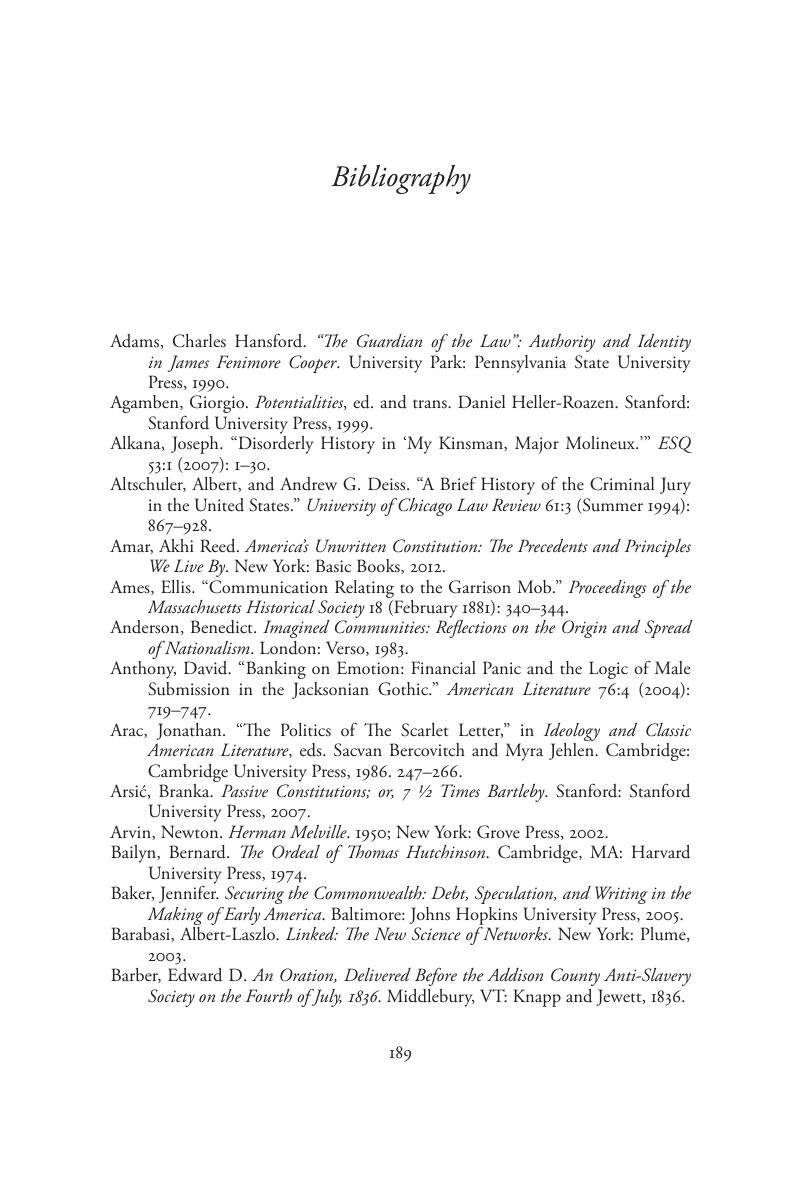Book contents
- Fictions of Mass Democracy in Nineteenth-Century America
- Cambridge Studies in American Literature and Culture
- Fictions of Mass Democracy in Nineteenth-Century America
- Copyright page
- Dedication
- Contents
- Acknowledgments
- Introduction
- Chapter 1 Network Theory Circa 1800
- Chapter 2 Gossip in the Age of Print
- Chapter 3 The People’s Curse
- Chapter 4 Publics, Counterpublics, Networks
- Chapter 5 The Tyranny of Opinion
- Coda
- Notes
- Bibliography
- Index
- Series page
- References
Bibliography
Published online by Cambridge University Press: 05 August 2015
- Fictions of Mass Democracy in Nineteenth-Century America
- Cambridge Studies in American Literature and Culture
- Fictions of Mass Democracy in Nineteenth-Century America
- Copyright page
- Dedication
- Contents
- Acknowledgments
- Introduction
- Chapter 1 Network Theory Circa 1800
- Chapter 2 Gossip in the Age of Print
- Chapter 3 The People’s Curse
- Chapter 4 Publics, Counterpublics, Networks
- Chapter 5 The Tyranny of Opinion
- Coda
- Notes
- Bibliography
- Index
- Series page
- References
Summary

- Type
- Chapter
- Information
- Fictions of Mass Democracy in Nineteenth-Century America , pp. 189 - 208Publisher: Cambridge University PressPrint publication year: 2015



